After all these years, I am still fascinated by World War 2. One of the reasons is because this conflict is simply chock full of stories of extreme bravery. Whether you are into reading about armor, airplanes, navy or marine units, there are endless tales of sacrifice, bravery and guts. Sometimes bordering on the insane.
One such story is permanently stuck in my mind – the one about the kid who lost an arm to a flack shell explosion off the nose of a B-17 over Germany. At that point, most of us would be resigned to our fate. Not this kid. No, somehow he staggers back up, gets his eye over the Norden bombsite lens and completes his mission.
Other stories just have me mutter “brass balls” when it comes to extreme bravery in the face of impossible odds. I love these stories and this build celebrates the insane bravery that happened on October 25, 1944 during the Battle of Leyte Gulf. More on that below.
The Grumman F4F Wildcat
My first impression of the Wildcat left me thinking of the term “plucky” to describe the fighter. It certainly was not as sleek or as impressive as the Corsair and it did not have the brute presence of the Hellcat. Most of the accounts I read about this fighter relate to early war trials and tribulations. In short: It could pack a punch and take a hit like few others. But it simply was no match for a Zero in the skies over the South Pacific.
But that wasn’t exactly true, was it?
Whether or not the Wildcat was designed to be a dog fighter, it certainly never amounted to one. After some less than ideal encounters, Wildcat pilots were warned to not engage in one-on-one dogfights with Zeros. Instead they were taught team tactics. When the Wildcat was employed as part of a team, it held its own and splashed a lot of Zeros. Since team tactics worked, they continued to be employed by Hellcats and Corsairs until the end of the war.
I’ve run into the Wildcat a few times over the years in both “wrecked” and “restored” modes:
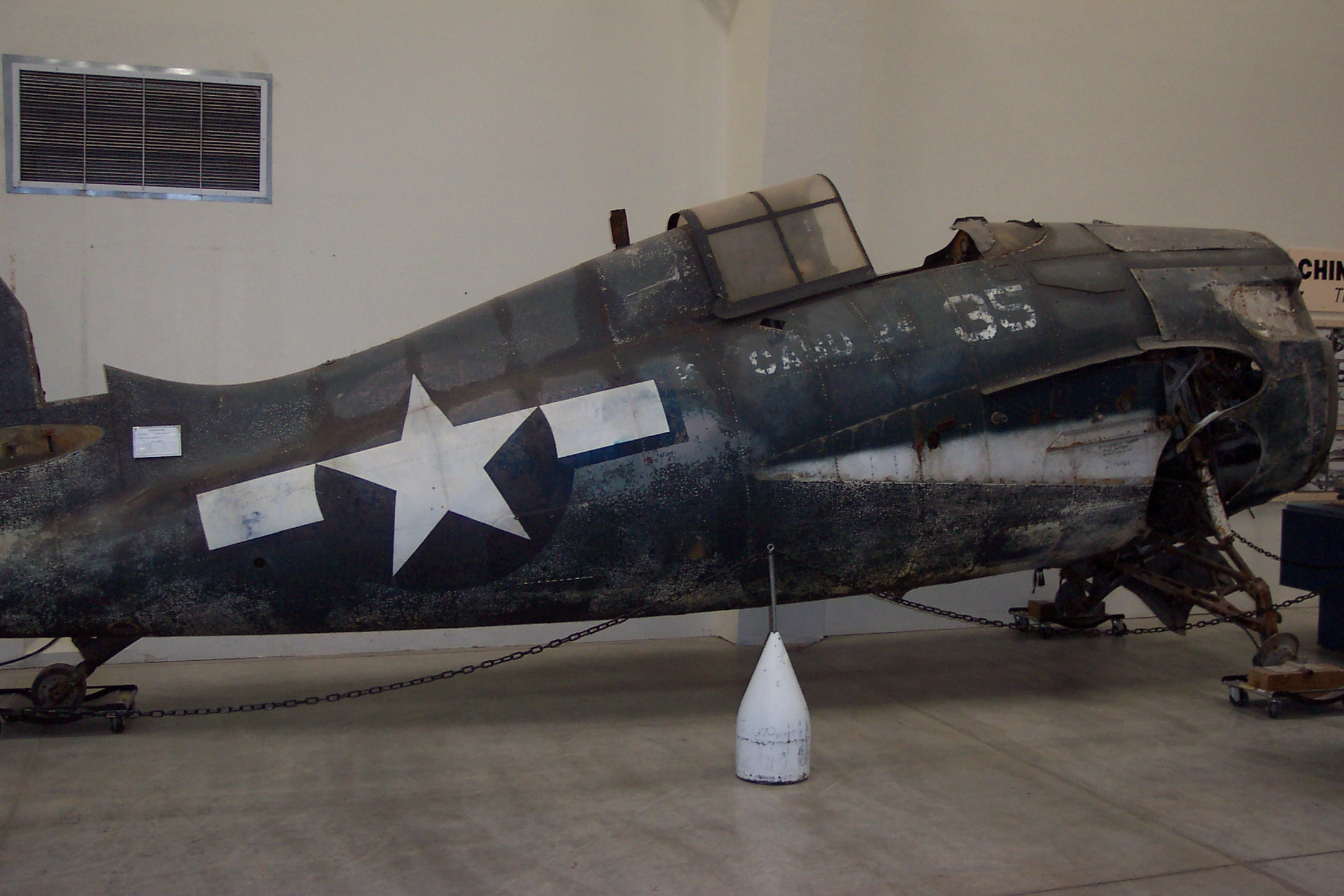


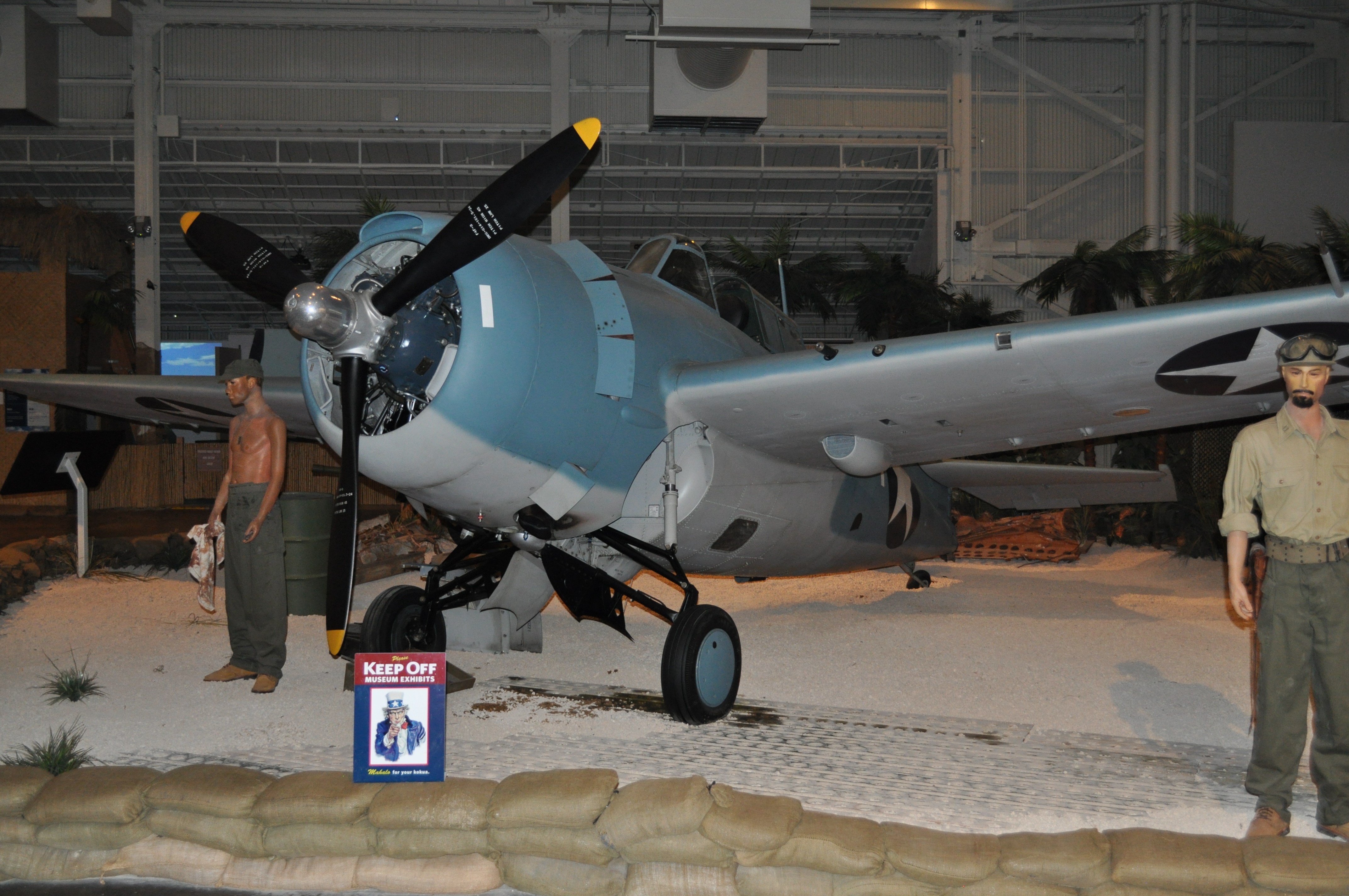
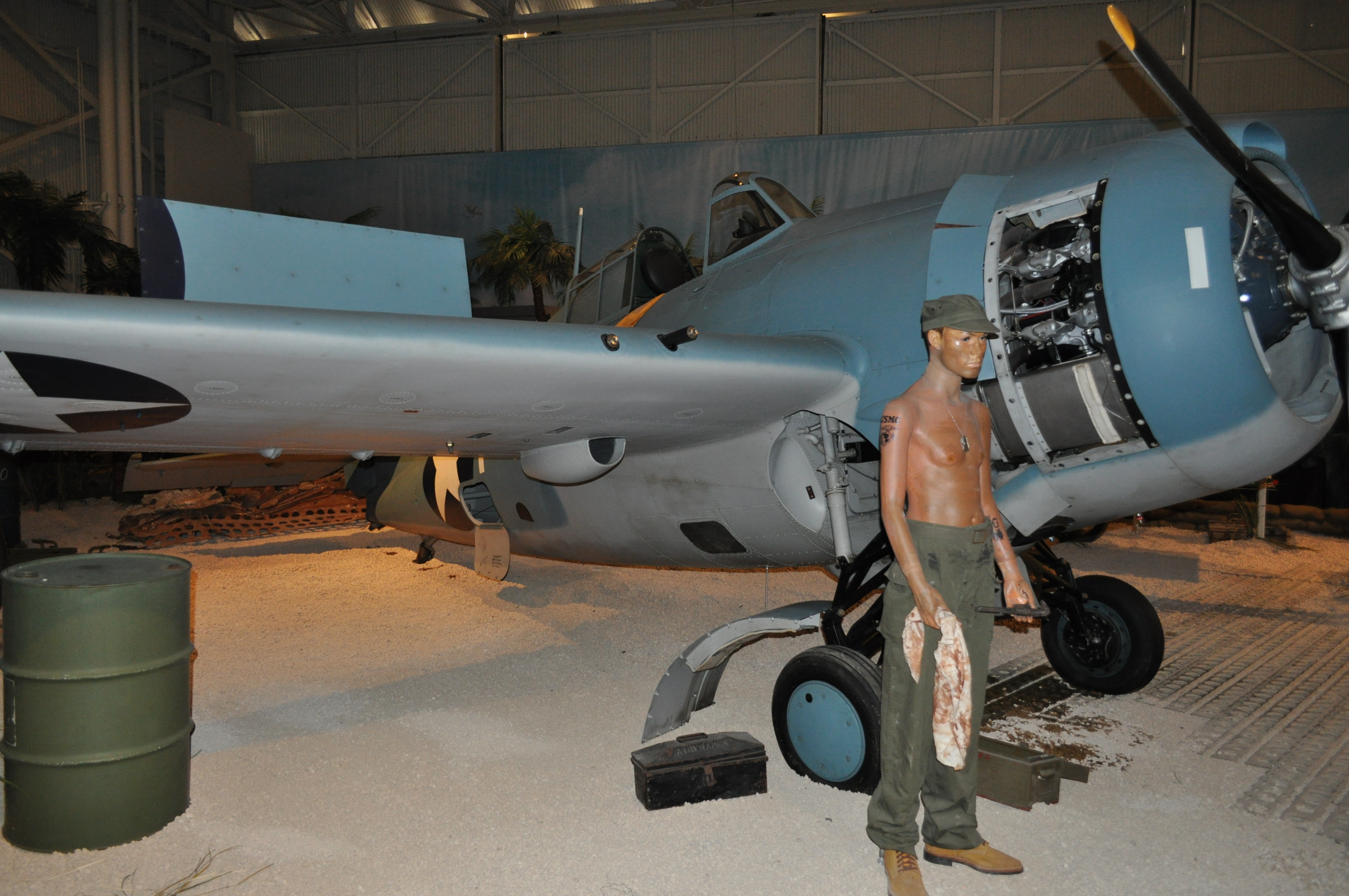
When you compare the Wildcat to later airplanes, you really notice how small and lightweight it is. That flimsy looking landing gear system falls and locks into place by gravity. There are no fancy hydraulics or electric motors there. Pilots had to crank it up by hand soon after take off.
The FM-2 Wildcat & Escort Carriers
Grumman Aircraft suspended its production of Wildcats in mid-1943 in order to start producing Hellcats. From this point on, Wildcats were produced under license by the Eastern Aircraft Division of General Motors. Because it was a different manufacturer, the Wildcats built by GM were called the FM-1 (which was essentially a 4 gun F4F-4) and the follow-on FM-2.
The FM-2 was an improved version of the Grumman F4F-4. The key difference being a more powerful engine which also required the fighter to have taller fin than the standard F4F-4. Starting in mid-1943, Hellcats gradually assumed the primary fighter role aboard fast fleet carriers. Wildcats were then used in secondary roles with the Navy and Marines. Newly built FM Wildcats mostly operated from escort carriers.
Escort carriers, sometimes known as “Jeep” carriers were about half the length and far lighter than Fleet carriers. They were cheaper to make and could be built quickly. However, they had no armor and little defensive armament. This made them extremely vulnerable. Adding to that vulnerability, escort carriers were also very slow. Too slow to keep up with the fast carrier groups. Instead, they were mainly used to escort convoys using their airplanes to defend against enemy threats such as submarines and planes.
Battle off Samar
On October 25,1944 during the battle of Leyte Gulf, three groups of escort carriers were providing air support of troops on the landing beaches. At least, that was the plan.
The Japanese Navy, knowing they were no longer a match for the USN, designed a complicated last ditch battle plan involving multiple independent task units in the waters off the Philippines. The key to this plan was to lure the bulk of the US Navy away from the Philippine islands. So, they sacrificed their last aircraft carrier (which was an airplane-less hulk at this point) as a decoy.
Admiral Halsey took the bait and was lured into taking almost all of his powerful Third Fleet well out to sea. This provided the opening the Japanese were hoping for.
A Japanese surface force of four battleships, eight cruisers and eleven destroyers, led by the super battleship Yamato, steamed towards the invasion beaches with the intent to destroy the invasion forces. Standing in their way were the three slow escort carrier groups left behind by Halsey as he raced out to sea.
The northernmost of the three groups was a unit known as “Taffy 3”. It was composed of three destroyers and four destroyer escorts protecting 6 escort carriers. They were certainly not a match for the Japanese force barreling down on them. To put it in perspective, the all of the vessels in Taffy 3 combined did not displace as much as the Yamato.
But they had no choice. They had to engage in order to cover retreat of their slow jeep carriers. For the next three hours, the small destroyers attacked the larger force off the coast of the Island of Samar.
Aircraft from the escort carriers, including FM-2 Wildcats, strafed and bombed the battleships with little damage being done. Once they ran out of ammunition they made “dry” runs at the Japanese force in an attempt to distract and get the ships to stop firing at the jeep carriers.
Despite sinking two escort carriers and damaging four others (for the cost of only 3 cruisers) the Japanese force withdrew. The destroyers of Taffy 3 and the aircraft off the escort carriers turned back the most powerful surface fleet Japan had sent to sea since the Battle of Midway.
The Arma FM-2 Wildcat
Arma Hobby is a relatively young scale model company founded in Poland in November 2013. I am not sure about their earlier work but they have sure made a splash on the scene of late with their Mustang, Hurricane and Wildcat kits in 1/72. What I like about these kits is the attention to detail, the impressive quality of the molds and that Arma offers several “levels” of kit: a regular version with the kit and decals and the Expert version I chose with the full meal deal of photo etch, paint masks and several marking options.
Now, I am not much of a 72nd scale builder. I mean, I used to build them way back in the day. But since returning to the hobby over 10 years ago, I have mostly been a 1/48 builder. Last winter I bought one of these kits at the recommendation of David Knights on the Plastic Model Mojo podcast. If I recall correctly, he said it was one of the most impressive single engine fighter kits he’s ever seen.
He did not lie.
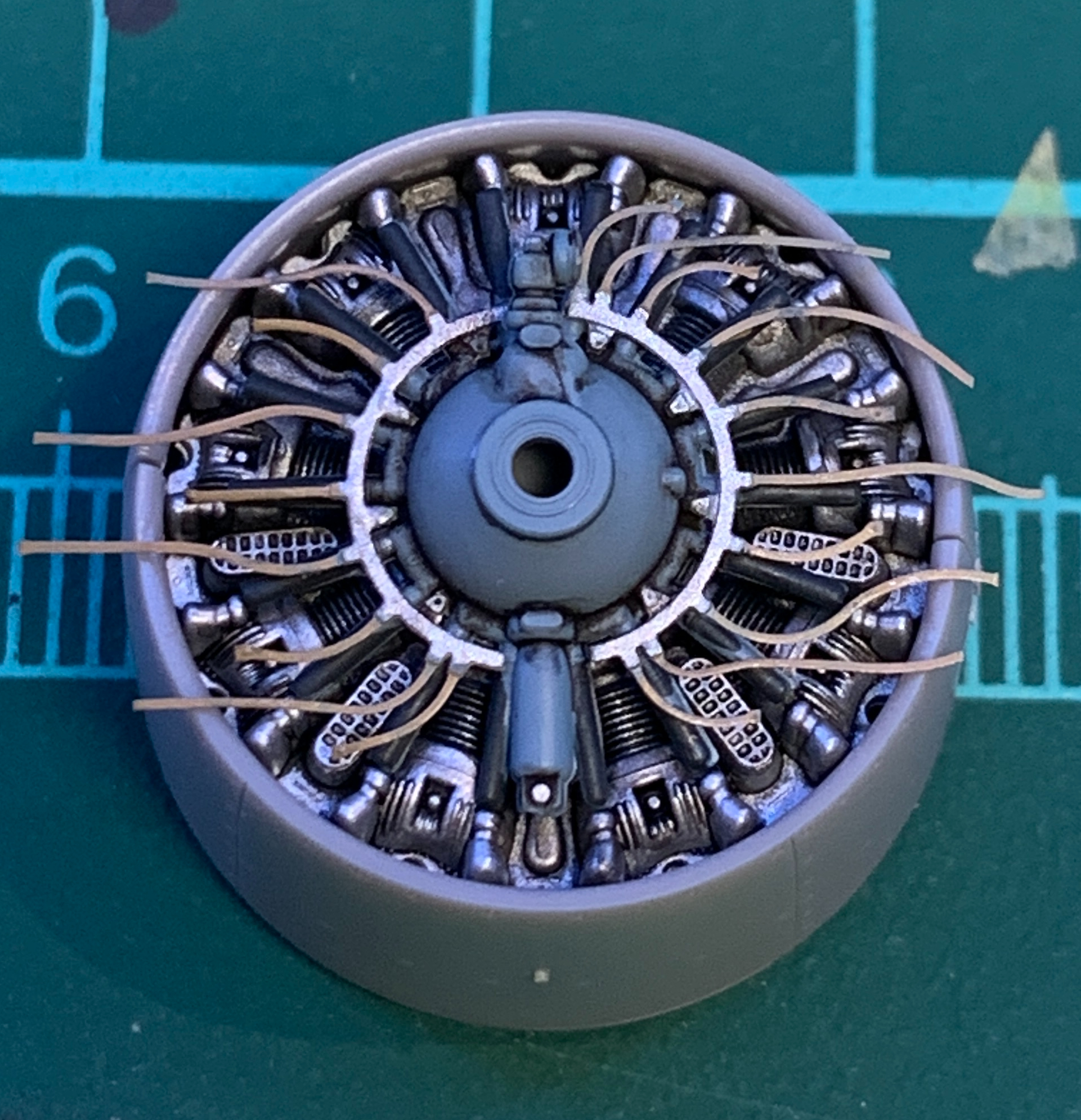
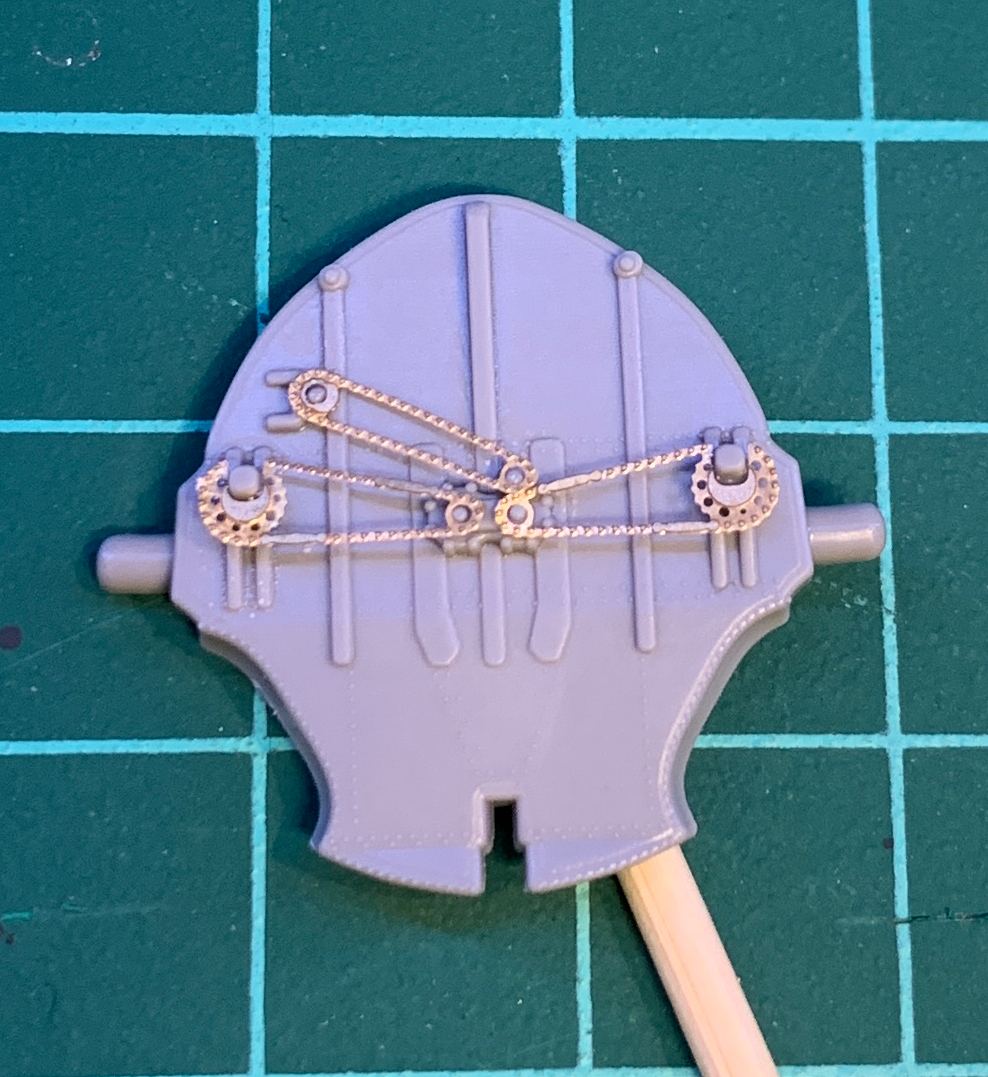


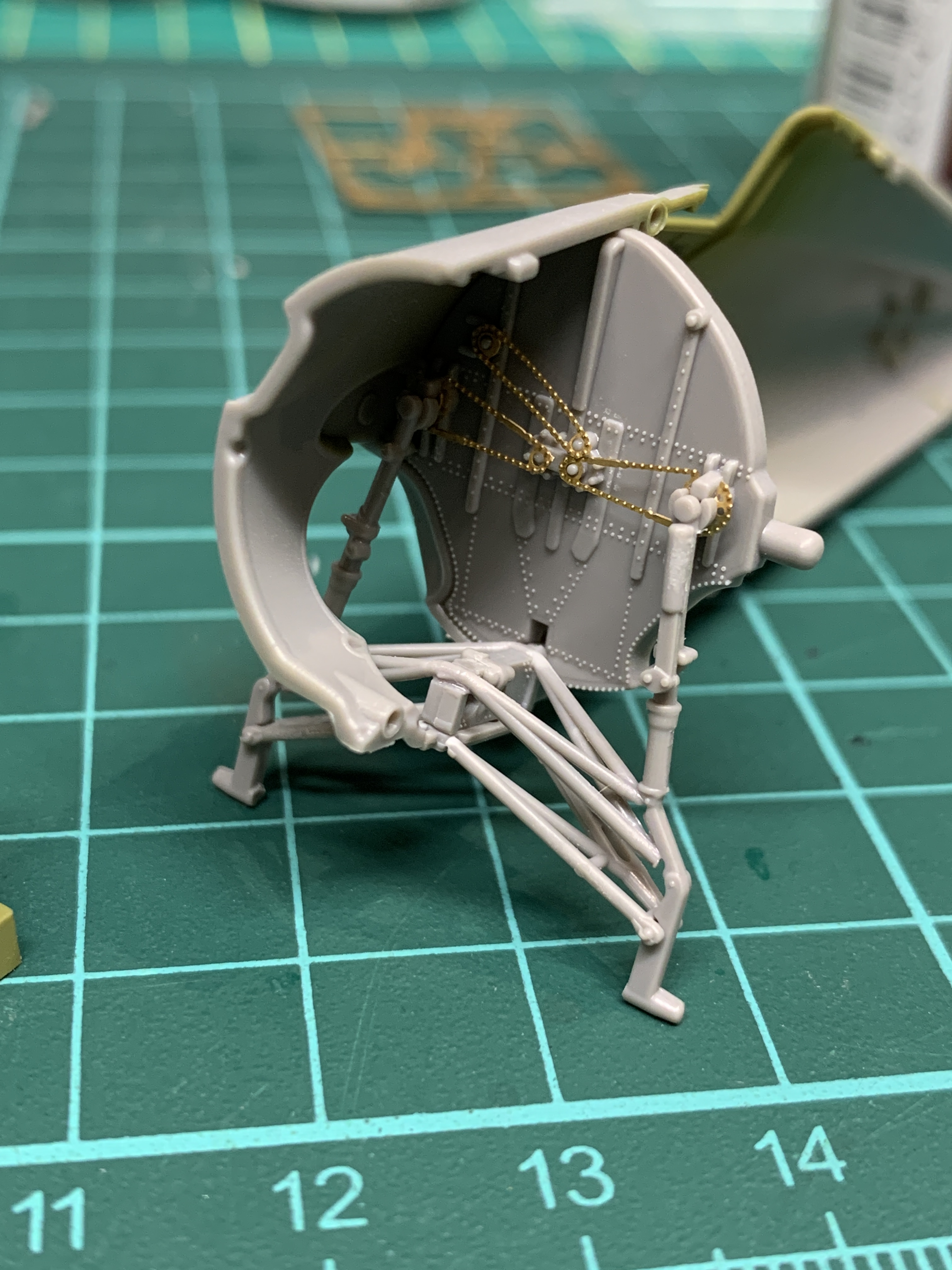
Having recently finished the Tamiya Wildcat I can tell you the detail in this kit is miles ahead despite its smaller size. I thought the engine and the cockpit were as good as I have ever seen in 72nd and definitely rival many 48th kits, even some recent ones. I thought the paint masks and the decals were excellent as well. All this to say, if you are interested in a 72nd Wildcat and you have the means, I recommend the Expert boxings for this model.
However, there are a few tricky aspects to the build:
- The multipiece cowl: Dry-fit this at least a dozen times before you commit to sanding or gluing. It WILL fit, but only when the stars align on an even numbered day during an odd numbered month;
- The wing to fuselage join: This will be gap free and easy to level but make sure to dry fit. I think my wing is ever-so-slightly wider than the mating surface on the fuselage. Some careful sanding of the wing halves might eliminate this; and
- The Landing Gear: I’ll give an ‘A’ for effort to Arma for the design of these parts but no matter how careful I was, I could not get my landing gear “unit” to fit into the bottom of the fuselage without breaking the parts once and then using considerable plastic surgery the second time. That said, once I made all the adjustments, it slipped in and I had the wings almost perfectly level.
I painted the Wildcat using decanted Tamiya AS-8 Navy Blue. This has been my latest go-to for the ever elusive Gloss Sea Blue colour. The next time I will try Mission Models paint or one of the other new paints I have picked up in the last 12 months.
Final Shots
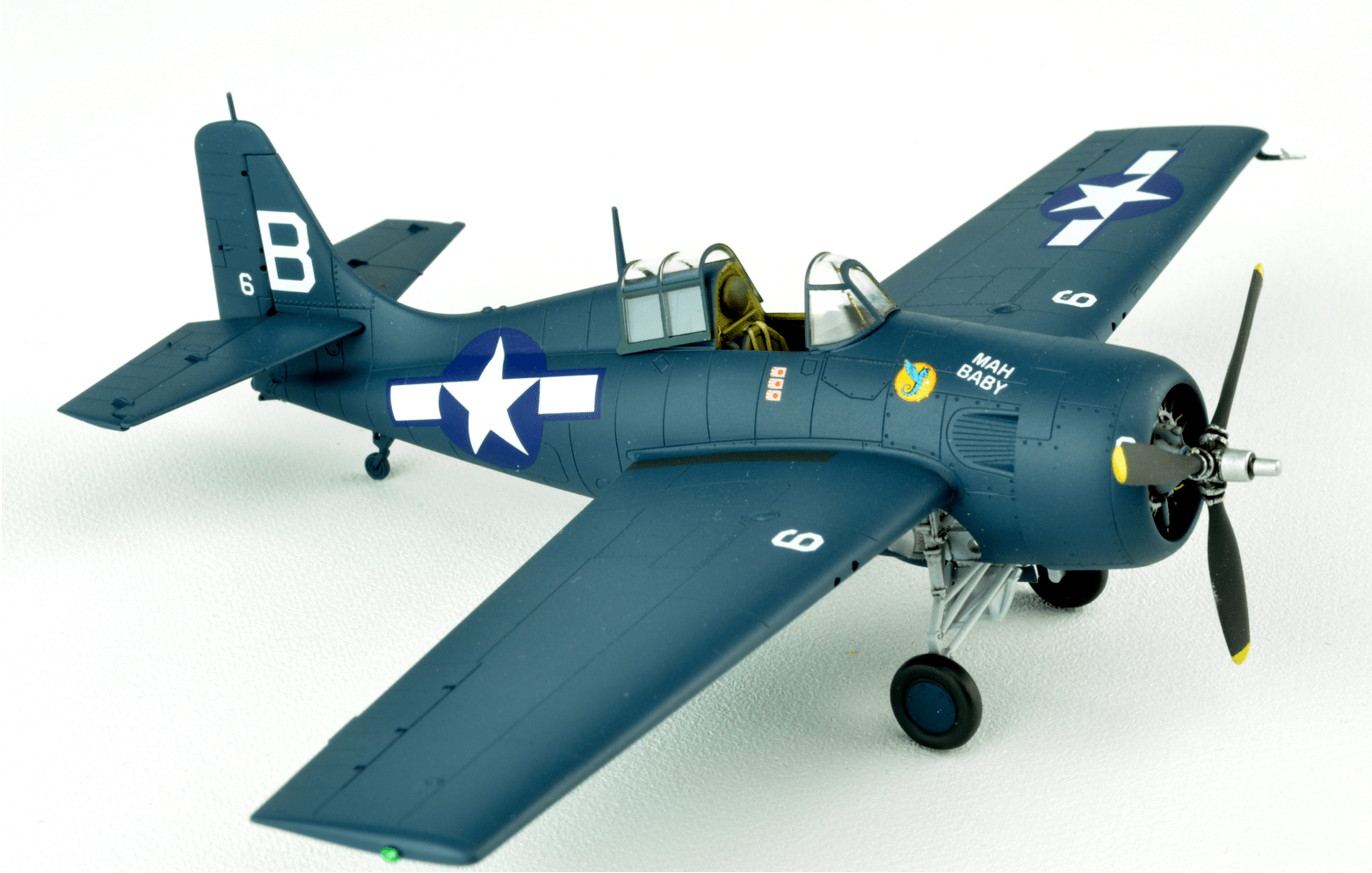



A History and a Build Video
You can view the video here or click below:
Last Thing
Over the years when I have done something stupid, I have had so-so results when contacting distributors and/or manufacturers for replacement parts. Arma Hobby generously sent me the replacement parts free of charge despite my offer to pay for them. After all, it was my “being manly” with the parts that turned them into splinters.
Oh well, it all worked out in the end.
I generally build in the larger scales but I have picked up a few interesting kits in 72nd in the last couple of years. Unlike the 72nd scale nightmares of my youth, these have been generally better build experiences. I think that is mostly due to the improvement of the kits but maybe some additional experience on my end has helped.
Isn’t that always the case?
I am still not 100% sure of this hue of Gloss Sea Blue. This paint is easy to find and use and so far it is the closest to GSB that I have used. Next time I will switch it up. I’d love to hear about GSB suggestions. Also, is there any truth to the rumor that WW2 GSB is a different from post war GSB? Let me know!


Reblogged this on My Forgotten Hobby IV and commented:
Worth looking into…
LikeLike
This is a very nice little story and an impressive build, especially in 1/72. Might I suggest SMS Dark Sea Blue which is as good as I think a model paint goes in matching the real colour. I understand it is now available in North America and it has what seems to me to be just the right level of sheen for that original paint. Having discovered it set me off on making a few of the US Navy’s aircraft from that era.
LikeLiked by 1 person
CVE: Combustible, Vulnerable, Expendable. Thanks for the history. Great build!
LikeLiked by 1 person
The detail is simply amazing.
LikeLike
Interestingly, I have the Arma F4Fs and also the Airfix kits. The Airfix kits are far easier to assemble and in 1/72 it is hard to see any more detail in the landing gear or cockpit. Arma goes for a lot of detail (“1/48 in 1/72”) and you will have to do more pusing and shoving to get it all in there. The same is true with the new P-51B – I almost shjitcanned my kit, but it finally came through and assembled looks very nice with no evidence of the Battle of Kursk that was fought to get it there.I managed to grab some old Squadron vacform canopies, which are much superior in scale.
The following is a shameless personal promotion: if you want the full story of the Battle off Samar, and quite a bit else, you might check out my book “Pacific Thunder: the Central Pacific Campaign August 1943-Niovember 1944”. You’ll get quite a bit of inspiration for the new Eduard Wildcats coming this spring.
LikeLiked by 1 person
Hi Tom – I am not one for Airfix kits but I can see your point. I found the Arma build to be a dream until the landing gear. Ultimately I had to do a lot of thinning of the parts to get it all to slip into the bottom of the fuselage as Arma would have us do. To be fair, the landing gear on 48th scale Wildcats is not much better. Tamiya’s was workable but the Hobby Boss kit ended up in trash can after too many build issues leading up to the wonky landing gear.
I’m very keen on the book – thanks for plugging it!
LikeLike